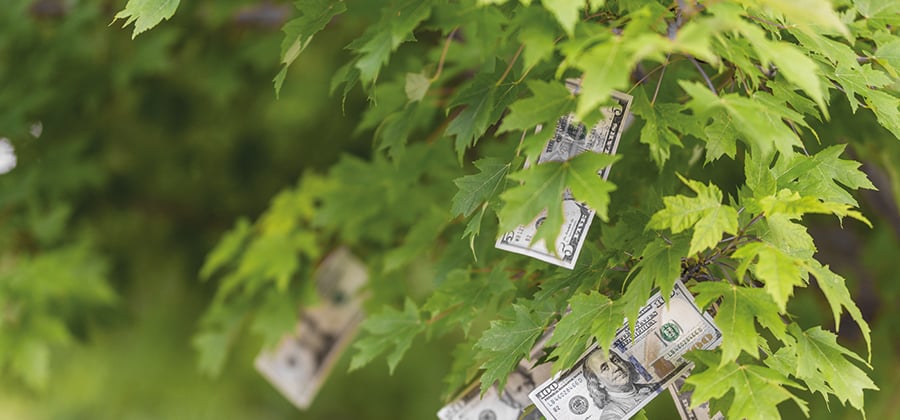There's a great joke in Douglas Adams' The Restaurant at the End of the Universe’ where the main characters come across a society that has adopted the leaf as legal tender, writes Matt Lucas FBCS, IBM Customer Success Manager.
Everyone becomes tremendously rich, but the high level of leaf availability means that one peanut soon costs three deciduous forests. So, to revalue the leaf they decide to burn down all the forests.
Of course, this is an observation on how currency needs to have scarcity in order to retain its value.
Traditionally, central banks have enabled scarcity because they are in complete charge of the money supply. But as we look towards the digital currencies of the future, how do we achieve scarcity when data can be copied at will? And what are the other properties of our existing currencies that we will need to duplicate?
To the first point, it turns out the internet is a great platform for controlling scarcity, as it allows people to create publicly visible, highly scalable ledgers that describe who owns what. And by distributing those ledgers across multiple independent places, it can help prevent tampering; this is how cryptocurrencies and non-fungible tokens (NFTs) work.
However, logging who owns what is not the only property a currency needs in order to be successful. Economists will tell you that money also needs to be a unit of account (so you can use it to measure the value of things), and a medium of exchange (so you can use it for payments and to settle debts). Many of today's digital currencies can't easily be used in these ways, often due to their price volatility and lack of broad acceptance.
So, let's take a step back…
When we consider the future of money, what do we actually need?
Future money needs to be secure, so that the cash can't be altered or duplicated, but neither the security nor the cash itself can be dependent on a single physical location. In other words, it should be possible for the cash to exist in a variety of places and be exchangeable in a variety of ways - whether that's through financial institutions, text message, memory stick, or some other yet-to-be-invented means.
Future money also needs to be suitable for both business and interpersonal transactions, and easy enough to use without technological experience. It also needs to be capable of working offline.
Finally, in order to achieve mass acceptance, payments using future money also need the ability to be anonymous, while simultaneously allowing businesses to follow Anti Money Laundering laws.
Digital currencies
There is currently no digital currency that supports all of these characteristics, but work is ongoing. Many countries are looking at central bank digital currencies (CBDCs) as the future of money; according to research by the Bank for International Settlements: Impending arrival - a sequel to the survey on central bank digital currency (bis.org) in 2020, over 80% of central banks were working on CBDC projects.
For you
Be part of something bigger, join BCS, The Chartered Institute for IT.
Pilots continue, and there have been two broad designs for CBDC systems so far. The first is account based, where a ledger records all transactions and owns the set of balances, and is similar to the way banks communicate with each other today.
The second is token based, where digital money is stored on personal devices such as smartphones. Token systems are more similar to traditional cash and so more easily support anonymous transactions, but are slightly more vulnerable to fraud and make money easier to lose.
Many people see CBDCs as the future of money. In advanced economies, it's seen as a way of reducing the cost of the banking system, thus allowing transactions to flow more easily. In developing countries, it's seen as a way of reaching out to the poorest people who do not currently use banks.
Some countries are less optimistic, however. Some pilots have been discontinued, citing concerns that it'll overturn the financial system and introduce the possibility of run risks on banks.
Whatever happens, it's clear that money will have a totally different look and feel in the future. Let's just hope it doesn't grow on trees.


















